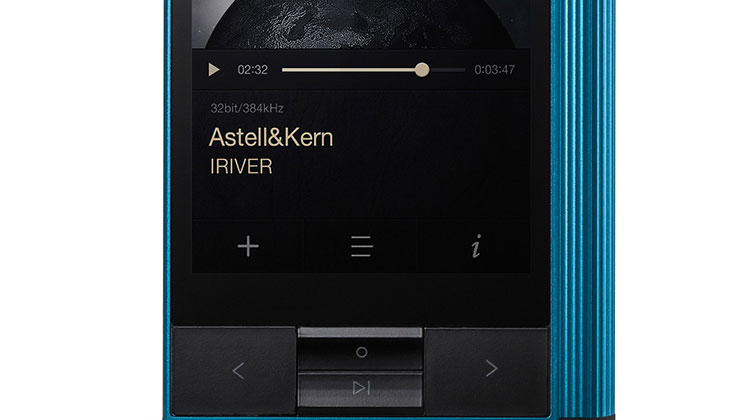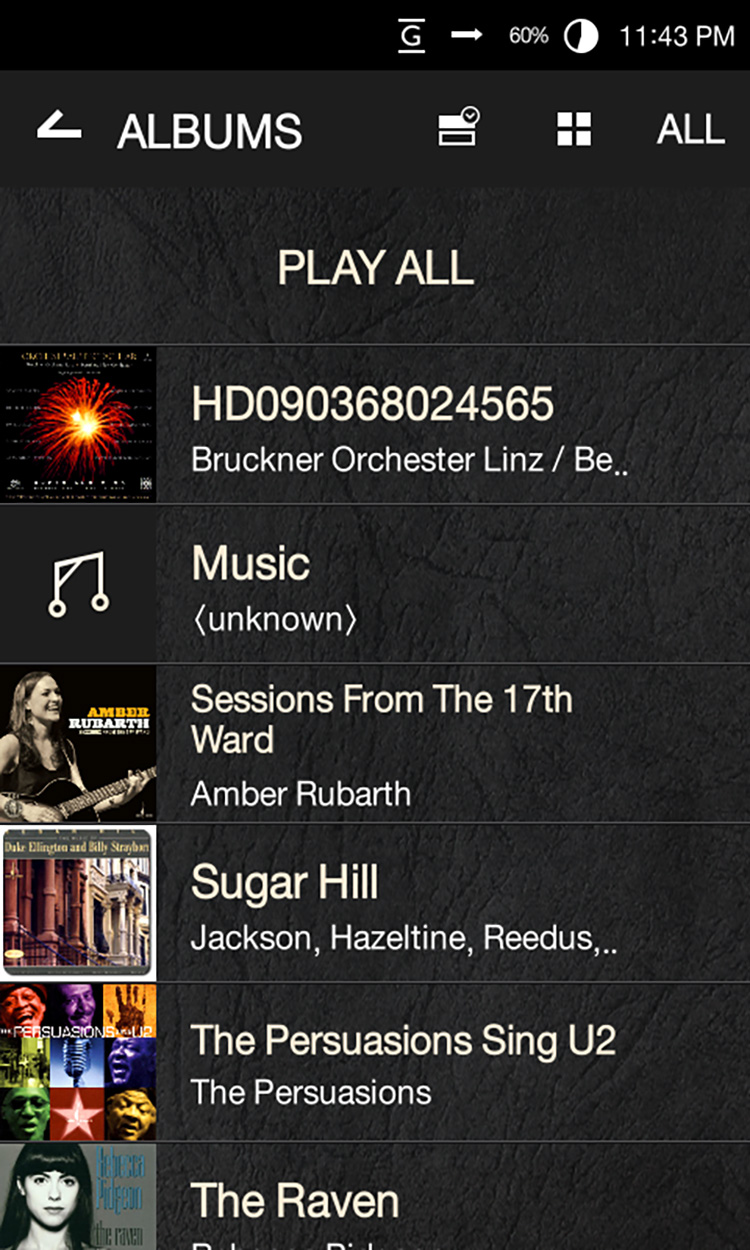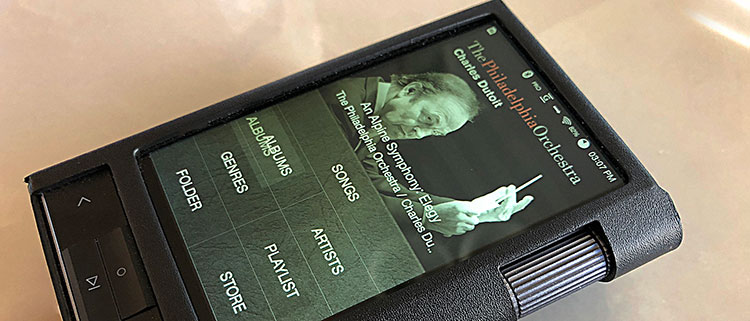
The Astell & Kern KANN is a feature packed high end digital audio player with superb sound and will drive just about any headphone
While not cheap, the Astell & Kern KANN is the most advanced, best sounding DAP I’ve ever heard or used.
Astell & Kern KANN Digital Audio Player
- The Astell & Kern KANN has great sound
- Native DSD playback up to DSD256 (11.2MHz)
- PCM audio playback up to 32bit/382kHz
- Built-in headphone amp with USB Type-C support for charging & data transfer
- 64GB internal flash memory
- Micro SD card support up to 400GB
- Full size SD card support up to 512GB
- aptX HD Bluetooth codec support
- Up to 15 hours battery life
- Heavy, bigger than almost any other DAP
- Android OS can be slow and clunky
- The KANN is expensive
We’ve been blessed with digital audio players (DAPs) for quite a while, yet the Astell & Kern KANN is a breed apart. Astell & Kern has been making digital audio players for years. They make high end players, with specifications and pricing to match. With prices beginning at about $300.00, the Astell & Kern line tops out at stratospheric prices of more than $3000.00. At $999.00, the KANN is actually in the middle of the A&K product line but more expensive than almost everyone else’s DAPs.
Colors Available:
Astro Silver, Eos Blue
Display:
4 inch WVGA (480-800) Touchscreen
DAC AKM AK4490 X1 (single DAC)
Supported formats:
WAV, FLAC,WMA,MP3, OGG, APE, AAC, ALAC, AIFF, DFF, DSF, PCM, DSD Native DSD64 1 bit 2.8 MHz, Stereo DSD 256 1 bit 11.2 MHz
Outputs:
Stereo Phone out, Line out: (3.5mm), Balanced out (2.5mm, only 4 pole supported)
USB Audio:
Micro USB
Audio networking support:
Wi-Fi (2.4GHz), Bluetooth v4.0 (A2DP, aptX HD)
Dimensions:
2.80” W x 4.56” H x 1.01” D
Weight:
9.83 oz.
Firmware upgrades:
supported
MSRP:
$999.00
Company:
SECRETS Tags:
KANN, music, Portable Music Players, Astell & Kern KANN, Audio Player Review 2018
Let’s start with a bit of history. The Apple iPod was not the first digital music player, but it was a massive seller, and it pushed a lot of people into the idea of having their music collection with them. Over the years Apple was selling them, iPods had more storage, better screens, and handled lossless formats as well as the truncated (in size and sound) MP3 format. iPods were also great in cars, and it was a rare car or truck that didn’t have iPod compatible USB inputs that would support them, along with an audio setup that let you change tracks, select playlists and motor along in audio bliss. Apple still sells the iPod touch in several configurations. It’s really an iPhone without the phone, but still running apps and having a camera.
Apple got tired of the original iPod as the iPhone rose in popularity, and many people, not wanting to carry two devices, moved their digital music to their iPhones. Android users did the same. Phones were portable, but did not have world beating audio sections. Apple supported MP3 and Apple Lossless formats, but that provided audio no better than CD quality. Android has done better, with some manufacturers like Sony and LG putting high resolution DACs in their phones.
Still, audiophiles wanted more, including mass storage and DSD support. Astell & Kern has answered that need with the KANN, and one-upped most other players, including their own models by adding a powerful headphone amp built in. Other digital audio players were portable, but if you wanted to use them with higher quality, inefficient headphones, it meant strapping on an outboard amplifier, with cords to attach the player and the amplifier. That was pretty much a pain for users. The KANN gives us high quality, lots of music format support, and you can plug in just about any headphone.
Out of the box the KANN needs to be charged up. My KANN arrived with about 15% battery available. The KANN comes with a USB to USB C cable, but no AC charger. You are on your own there, but most owners will have a USB charger or certainly a spare computer USB port.
The KANN comes with some Hi-Res samples on board, which you are welcome to keep or erase.
Getting music on the KANN is easy enough. Since it’s an Android device, and I was transferring files from my Mac laptop, Astell & Kern provides a downloadable app called Android File Transfer. With that installed, the KANN displays a window on the Mac OS desktop which allows you to drag and drop any file you want onto your KANN. If you have multiple memory cards plugged in, you can choose the card to drag the music to, or you can choose the KANN’s internal storage. I saw no issues using the app. The KANN has a large volume control but you can also drag the volume level up or down on the KANN touch screen. There is a topside power switch. You press and hold it for a few seconds to turn the player on or off.
The KANN accommodates headphones with 3.5 mm jacks or a 2.5 mm balanced out for headphones so equipped. Along with the headphone jacks, the top plate also has balanced and unbalanced line out jacks.
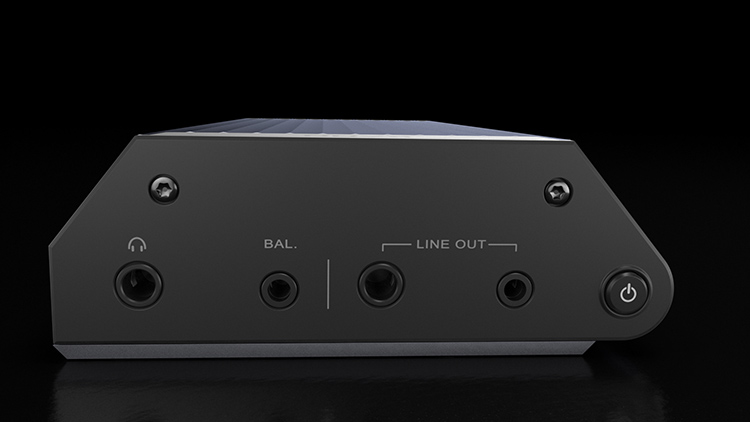
The bottom plate offers USB C for data and charging. A more familiar micro-USB type-B port is included for audio. With this port, you can send digital audio out to an external DAC, or the KANN can act as a DAC on its own.
Secrets Sponsor
External controls include play/pause, next/previous track, and a home button.
The on screen display is bright and useful, with the KANN displaying album art, the format of the track being played, and of course the track name and artist.
The screen also displays the current time, whether Bluetooth or Wi-Fi are enabled, battery life, if the file is playing from an inserted card or internal storage, and if gapless play is turned on.
Access to more advanced settings, like Wi-Fi credentials and equalizer settings, are easily reached by swiping down from the top of the KANN screen.
Like many DAPs, the KANN is Android based. It’s a little slow to display at times, and screens can take a split second to render involved graphics like album art.
I wish companies would invest in the design of operating systems designed to only deliver audio playback, but with Android being a free resource, companies aren’t likely to make the investment to go their own way. Android does OK, it just could be snappier.
In a few words, the KANN sounds great. I started with my hard to drive HiFiMan 560 planar headphones. They usually require an external amp to show off their quality, but the built in amp of the KANN worked just great. Bass was deep, the highs were sparkling. Of course the headphone amp is, I think, the main reason people will want the KANN, and I don’t think they will be disappointed. I tried a variety of headphones, including B&W P5’s, Sennheiser HD 660’s and Beyer T51i’s. All sounded excellent, and none ever strained over wide dynamics or deep bass.
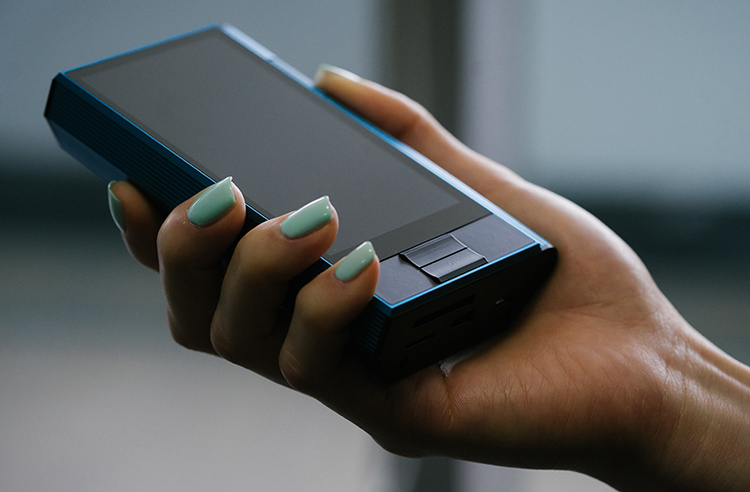
The KANN had enough resolving power to let me hear the sometimes subtle differences between my headsets. Since the amplifier is part of the unit, it was easy to compare, although my harder to drive headsets required more amplifier output from the KANN. That was easily accomplished with the lo-hi switch which is easy to activate.
I also paired the KANN to a Denon receiver in the bedroom. When I turned the KANN on, the Denon automatically switched inputs to where the KANN was assigned. It was all easy and transparent.
I saw two firmware updates since I’ve had the KANN, and I’m happy to see many bugs being fixed and features added. In my time with the KANN, however, I didn’t experience any bugs. Firmware and software updates are announced on screen, and are easily done over a Wi-Fi network.
I listened to a variety of tracks on the KANN, some hi-res FLAC, some ripped CDs in Apple Lossless, and some old MP3 rips. The Apple Lossless rips sounded quite good, the MP3s revealed some thinness at the frequency extremes, and the high resolution FLAC and DSD files I sampled sounded excellent.
The higher quality tracks I enjoyed included:

American Mavericks with the San Francisco Symphony. These hi-res tracks have terrific dynamic range, and spectacular percussion sounds. This was a 96kHz/24bit recording.
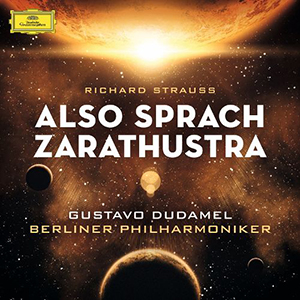
Also Sprach Zarathustra with the Berlin Philharmonic. Wide dynamic range and a chance to test gapless playback which worked very well. This version is a 96 kHz/24 bit recording from HD Tracks.
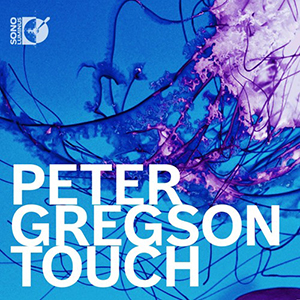
Touch by Peter Gregson. This is a classical crossover collection with wide dynamics and some quiet passages that let me hear how quiet the KANN is when the music is subtle. I listened to the 192kHz/24 bit recording.
DAPs are great to take along when traveling, and most car audio systems accept them. The manual notes that the KANN is not likely to work with Bluetooth car audio systems, and they were right. It paired, but no audio was output. I asked Astell & Kern about this and their reply was logical. Jason Henriques of Astell & Kern wrote me that “Limitations of Bluetooth bandwidth really only reliably stream CD-quality (16/44.1) or less without buffering or dropouts. All of the Astell & Kern players in the last two years do support aptX HD Bluetooth which will support up to 24-bit/48kHz streaming over Bluetooth, but there are no car systems and very few Bluetooth speakers that support aptX HD.”
Secrets Sponsor
I did use a standard USB to USB C cable in my BMW 3 series, and that worked just fine. I got album art on my display, and my steering wheel controls allowed me to jump from track to track. Hearing quality playback in the car was very addictive, and even my created playlists were available from the BMW screen.
One experience I had as soon as I plugged the KANN into my car system was disconcerting. I waited for the device to show up on screen, but nothing happened. I thought it wouldn’t work in my car, but it turns out the music information was being cached by my car. A couple of minutes later I was up and running. On a second trip, the KANN came up right away, so the caching didn’t have to happen again. I had more than a thousand albums on the KANN, so that explains the original delay. I think the KANN is too expensive to leave in a hot or cold car exposed to the elements, so I’ll probably use it sparingly, letting my old iPod classic remain on car duty or as long as it lasts, but the KANN worked just fine. I just would not leave it in the car.
THE ASTELL & KERN KANN is an expensive player, but it delivers. If you are using high-end headphones, the KANN is an excellent choice.
- Superb Sound Quality
- Variety of formats supported
- Clear easy to read screen
- Easy upgrades
- aptX Bluetooth
- Headphone Amp built in
- Overall Design
- Android is sometimes slow – create dedicated OS
- Bluetooth in-car support, even if lower resolution
I have been extremely pleased with the KANN Digital Audio Player. I travel a good deal, and use some hard-to-drive headsets. I want excellent quality on the road, and don’t want to drag headphone amps and more cables to hook everything up. The KANN meets those needs, and provides terrific digital audio playback. The KANN can render just about any format you want, from lowly MP3 music to high resolution audio in multiple formats including DSD.
Storage on the KANN is prodigious. The company recently tested and certified the Sandisk 400GB cards, so it can support up to 400GB microSD and 512GB full sized SD cards. That’s almost a terabyte of onboard music storage.
Yes, the KANN is bulkier than most DAPs, but that’s largely due to the built-in headphone amp. If you took most players, and added a capable headphone amp, the resulting bulk of two devices would likely be heavier.



